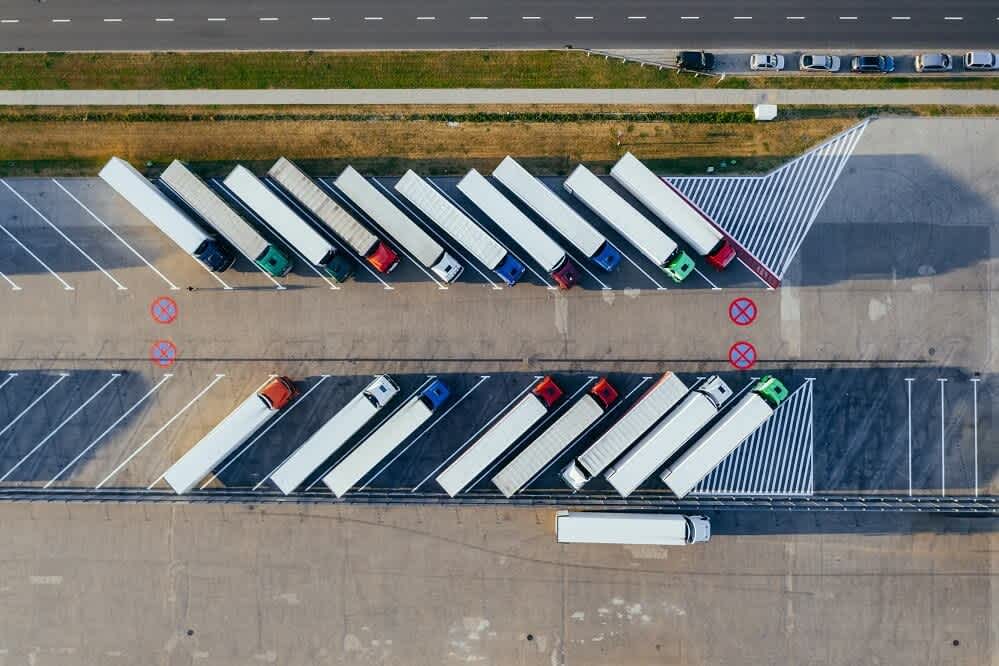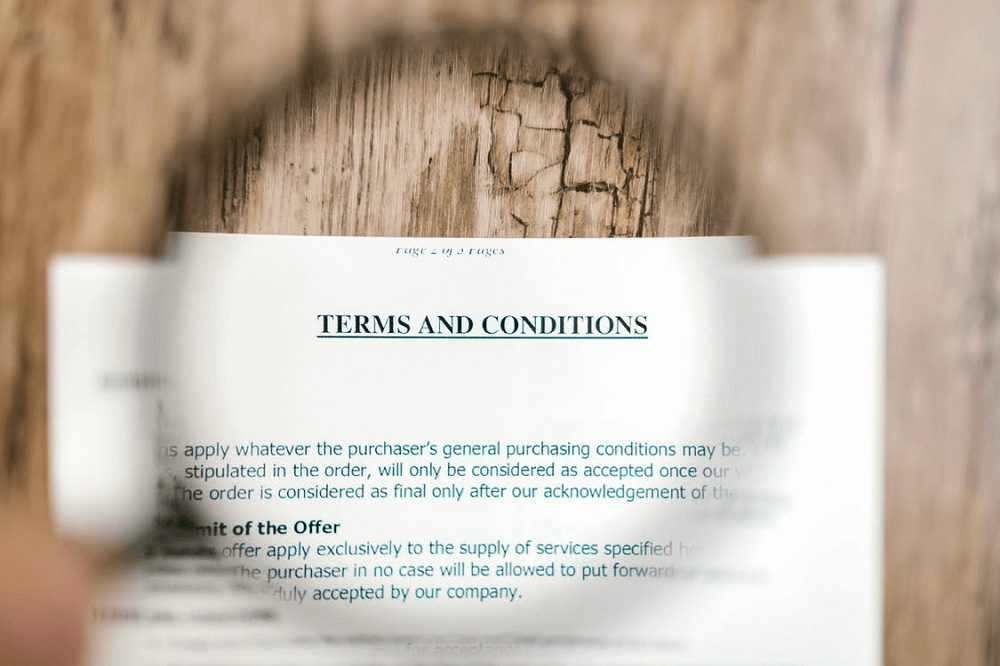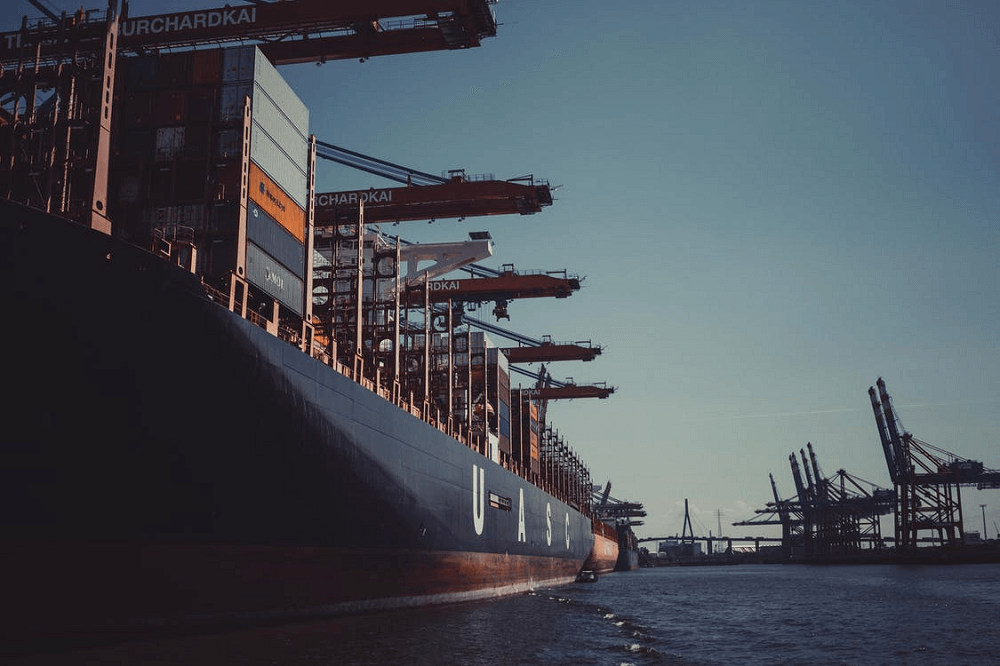
by Sam Franklin | June 17, 2022 | 11 min read
Understanding the Delivered Duty Paid (DDP) Incoterm
Get fundedLast updated: July 08, 2022
As shipping is the last event in completing a sale, buyers and sellers often overlook the actual costs of shipping. With so many different modes of transportation, with many handlers across each leg of the journey, it is important for both buyers and sellers to understand where their liabilities lie.
The International Chamber of Commerce (ICC) created eleven Incoterms to describe shipping policies and define where the risk and responsibilities lie between the buyer and seller.
One of the Incoterms that places most of the responsibility on the seller is known as Delivery Duty Paid (DDP), and we will cover everything you might need to know about it in this article.
If you’re looking for information on the other Incoterms, see our Incoterms Overview section.
Table of contents
- What is Delivered Duty Paid (DDP) Incoterm?
- Understanding Delivered Duty Paid
- The terms in DDP
- When to use DDP
- When not to use DDP
- Advantages of DDP
- Disadvantages of DDP
- DDP vs. other Incoterms
- Conclusion
What is Delivered Duty Paid (DDP) Incoterm?

DDP stands for Delivered Duty Paid, one of the eleven trade terms available under the Incoterms 2020. It is an international trade term and shipping policy that places the maximum responsibility and risk on the seller’s side. Under DDP, the seller is responsible for all costs associated with delivering the goods until the shipment arrives at the agreed-upon location in the buyer’s country, as the sales contract dictates. It’s also the seller's responsibility to handle the export and import formalities, such as clearance, customs duties, taxes, fees, and customs documentation.
In short, the seller is responsible for paying all the costs associated with the delivery until they reach the named destination. At that point, the buyer takes their only responsibility in arranging the payment for unloading the goods at the final destination.
Understanding Delivered Duty Paid
DDP was published initially in Incoterms 1967 by the International Chamber of Commerce and has been largely unchanged.
As mentioned, the seller holds the maximum responsibility, including all the relevant bureaucratic import clearance procedures. This means that the seller must have the necessary expertise and knowledge to ensure the entire shipping process runs smoothly, so the goods arrive by the delivery date.
The seller is also likely required to register as a commercial entity in the destination country. As a result, the seller pays additional taxes, such as VAT/GST, for importing and might be unable to recoup the cost.
The risk to the seller is broad with DDP. Most sellers won’t have local destination knowledge or the proper licences to deliver goods successfully. This is especially true when factories in China quote DDP, who often take risks to import goods illegally.
Although it might seem like a straightforward process for the buyer, they are entirely dependent on trusting that the seller can deliver the goods and handle all customs formalities with the DDP shipment. If something goes wrong, the buyer has no knowledge of the shipping chain as it’s all handled by the seller.
Finally, unlike the CIF Incoterm, which restricts its usage to just sea or inland waterway freight, DDP can be used in multimode transport, such as ocean, road, or air transport.
The terms in DDP

The terms in a Delivered Duty Paid agreement outline what the seller is responsible for, what the buyer is responsible for, and where the risk transfers from the seller to the buyer.
For the agreement to be finalised, both parties agree on the place of destination. The final delivery can be at the buyer’s premises, a warehouse, a container yard, a retail unit, or wherever the buyer wants the goods delivered. However, the location must be stated explicitly to the seller so there is no misunderstanding.
Interestingly, the DDP agreement doesn’t include the payment terms. The rules do not specifically state when the buyer must pay for the goods, and the payment terms must be agreed upon in the sales contract.
Additionally, insurance is not an obligation for the buyer or the seller in the DDP shipping Incoterm.
DDP agreement: buyer and seller responsibilities
The DDP Incoterm places maximum risk and responsibility on the seller for all expenses incurred. However, there are still some responsibilities that lie with the buyer.
Seller’s responsibilities
Export side
Drawing up the sales contract and related documents
Arranging transportation through any kind of carrier
Paying all transportation costs, including shipping costs or domestic freight costs
Loading charges
Paying for pre-carriage and delivery
Export packaging
Export clearance and customs documentation
Payment of insurance (if required by sales contract)
Creating a commercial invoice for the shipment
Import side
Import clearance formalities
Acquiring approval from the appropriate local authorities
Import licence (if required by local authorities)
Import clearance inspections
VAT charges and local taxes
Import duty
Arrange a proof of delivery
Alerting the buyer once the goods are delivered
Paying other expenses if goods are lost or damaged
Buyer’s responsibilities
The buyer has minimal responsibility, as the maximum risk is placed on the seller. However, they are still responsible for the following:
Payment of goods, as dictated by the sales contract
Unloading fees at the destination address
Assisting the seller in obtaining documents needed for export or import clearance formalities
Where is the risk transfer?

The risk transfer in DDP occurs when the goods are made available to the buyer as they reach the named destination.
However, it is crucial that both parties must agree on all payment terms and state the name of the destination before finalising any transaction. This is to ensure that there is no confusion about where the risk is transferred.
Managing customs
The customs requirements for DDP shipments vary from country to country. In some countries, the import clearance can become a complicated and lengthy process, so it is usually a good idea for the buyer to arrange the import clearance in these countries.
Additionally, DDP isn’t permitted in countries such as Russia. In this case, the seller might need a different shipping policy.
When to use DDP
The DDP Incoterm is typically used in international business by advanced suppliers, where the seller is confident that they can handle all of the import clearance formalities in the foreign countries. Typically, these advanced suppliers have a successful track record in exporting goods and clearing the shipment at the destination port.
DDP is ideal in business-to-consumer (B2C) shipments and is great for high-value items where the average order value is over $50.
Because most of the risks and costs lie with the seller, it is best to use DDP when the supply chain costs and routes are stable and relatively easy to predict.
Finally, for buyers, DDP is best if you trust the seller and the freight forwarders they use, as using a cheap freight forwarder might result in delayed shipment.
When not to use DDP
Typically, US exporters and importers should not use the DDP Incoterm for international trade.
DDP places the responsibility on US exporters to pay the value-added tax (VAT), which can reach up to 20% of a good’s value. Additionally, the buyer is sometimes eligible to receive a VAT refund. This means the seller would have to absorb the VAT, while the buyer gets a discount on the total order value after the VAT refund.
Additionally, because sellers bear all of the costs, exporters might be subject to unexpected storage and demurrage costs if there are any delays in the shipment by customs or carriers. These unexpected costs can quickly eat into the exporter's bottom line.
On the other side of the equation, because the seller is in charge of the entire DDP shipment, US Importers (or any buyer) have limited information about the supply chain because the seller is in charge of the whole DDP shipment. Furthermore, because the freight forwarder is the seller's client, it is usually challenging to get any information out of them regarding the status of the shipment. In fact, the buyer has absolutely no control over the shipment.
Furthermore, if the DDP is handled poorly, the shipment will likely be examined by customs, which would cause further delays in delivering the goods.
Advantages of DDP
DDP is particularly advantageous to the buyer because the seller assumes most of the liability and cost for shipping. The buyer is not responsible for delivery costs, taxes, or import duties. In addition, the buyer is protected from any unknown costs that can occur in international trade, such as inspections or storage fees.
Because there are no additional costs and everything is priced into the quote for the product, the buyer typically has an improved customer experience. In addition, the buyer can be sure that their total landed cost amount is absolute, and any additional fees lie with the seller.
If there are no delays, the buyer's process is typically quick and smooth as all of the import formalities have been paid. Then, the buyer just has to wait for the shipment to arrive, accept it, and arrange for unloading at the final destination.
As DDP provides great customer service to the buyer, it can typically result in repeat customers.
Disadvantages of DDP
Although DDP might look like an excellent deal for the buyer, some potential disadvantages are often overlooked.
First, as the seller is ladened with all the import formalities, there’s ample opportunity for errors to occur if the exporter is not an expert on customs clearance in the buyer’s country.
Furthermore, the seller always tries to cut costs - as you would expect in any business. It is in the seller's financial interest to find the cheapest option for the transportation costs. As a result, they will always choose the slowest option, and shipping delays often occur when the seller cuts costs.
As the seller handles the delivery, the buyer has no control over the delivery time, with no option to speed things up if needed.
Additionally, the buyer is likely to pay higher prices for shipping in DDP, as the seller needs to factor in all the potential additional costs into their product pricing. Typically, the seller quotes a higher price, regardless of any additional charges occurring.
Lastly, as the shipment occurs after the buyer has already agreed to purchase the product, the seller usually isn’t helpful during the delivery. Therefore, if a delay occurs, the exporter is likely to place the blame on the logistics company and act as if they can’t do anything to help.
As the seller is responsible for most of the risks and costs, DDP could be disadvantageous if the seller isn’t an expert in the rules and regulations of the buyer’s country. Any mistake along the journey could prove costly if mishandled.
DDP vs. other Incoterms

FOB vs. DDP
FOB stands for Free on Board, and it places more responsibilities on the buyer than DDP. In FOB, the buyer has additional responsibilities such as arranging the shipment to the destination port, paying for charges and loading at the destination port, and paying for all the import formalities such as customs clearance and import tax.
In FOB, risk transfer occurs when the seller loads the goods onto the shipping vessel.
CIF vs. DDP
CIF stands for Cost, Insurance, and Freight. It still requires the seller to ship the goods from the origin port to the destination port and pay the shipping costs but does not require the seller to arrange all of the import formalities.
Although DDP places more responsibility on the seller, CIF includes the obligation for the seller to obtain insurance to protect the risk to the buyer.
FCA vs. DDP
FCA stands for Free Carriage Agreement. Like FOB, FCA places more responsibility on the buyer relative to DDP.
In FCA, the buyer also has to pay for charges at the origin port, arrange the shipment to the destination port, and pay for all the import formalities.
The risk transfer occurs much earlier in FCA, as it happens when the seller delivers and loads the goods onto the carrier named by the buyer.
Conclusion
Delivery Duty Paid is a fantastic Incoterm for buyers as it places most of the responsibility on the seller. However, because the seller handles most of the logistics, the buyer will always pay much higher prices for the shipment. Additionally, the buyer depends entirely on the seller to provide transparent information as they have no control over the logistics chain.
Written by

Sam founded his first startup back in 2010 and has since been building startups in the Content Marketing, SEO, eCommerce and SaaS verticals. Sam is a generalist with deep knowledge of lead generation and scaling acquisition and sales.


